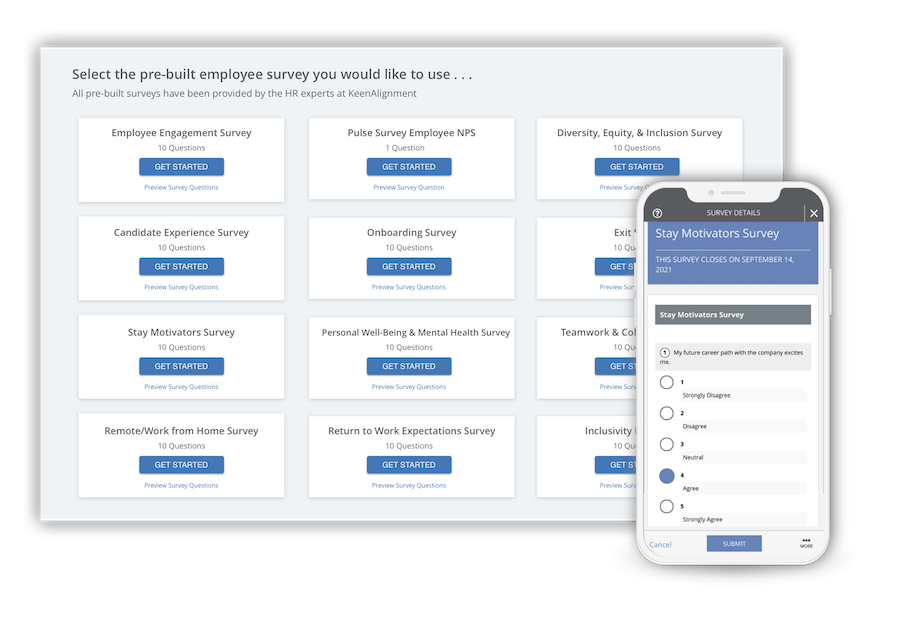If you're like most business owners, you might have a general idea of how much employee turnover your business experiences. But you might not have a solid number in mind, which is unfortunate because replacing an employee can cost as much as two times their salary, and it can hit businesses hard if they aren't prepared.
Employee turnover is so frequently talked about yet rarely addressed for the sole reason that most businesses find it too hard to quantify. Sure, turnover can feel like it’s tough to control, but it's not as abstract as many make it seem. In fact, there are ways to measure the impact it has on your company.
This article by Guest Author Rachel Fletcher will show you how to calculate employee turnover rates and then walk you through a few steps to improve employee retention.
Want to learn more about #Turnover at your company? Find out how to calculate turnover rates, what may be causing it, and how to keep turnover low in the latest from @ClearCompany with guest author Rachel Fletcher of @QuanticSchool:Calculating Turnover Rates
Here’s an example of how to calculate employee turnover. You need to calculate employee turnover for your organization’s sales department.
- You want to measure turnover for the year 2021.
- There were 58 sales department employees on January 1, 2021, and 62 on December 31, 2021.
- Calculate the average number of employees for 2021: (58 + 62) / 2 = 60 employees.
- In 2021, 7 employees left the sales department.
- Calculate the sales department turnover rate for 2021: (7/60) x 100 = 11.67% turnover.
Compare your sales department’s turnover rate to industry averages and repeat the calculation for other departments and time periods to compare turnover within your own company.
Calculating Employee Turnover Rate
Calculating staff turnover is helpful for accurately gauging whether or not you’re losing more employees than you should be. We're going to break down how you can calculate turnover in a few easy steps:
Step #1: Determine the time frame for which you want to calculate employee turnover.
Step #2: Jot down the number of employees on the first day and the last day of your analysis.
Step #3: Calculate the average number of employees by adding the number of employees at the beginning and end of the time period and dividing by two.
Step #4: Find out the number of separations (voluntary and involuntary) that have occurred over your selected period of time.
Step #5: Divide the number of employee separations by the average number of employees. Then multiply that number by 100 to get your turnover rate.
Step #6: Compare your turnover rate to industry standards. This is a great way to see how you stack up against your competitors.
You can get more particular with your findings, too. For example, you could look at turnover rates among just mid-level employees or newly appointed managers. You could also look at annual turnover rate differences between genders or departments. The same approach applies to any group you wish to analyze.
Getting to Know Your Turnover Rate
Market averages are an excellent starting point for understanding employee turnover rates. However, if you're only comparing your business to industry norms without considering the context of your turnover rate, you might overlook the underlying problems at play. To gain a fuller picture of your turnover rate and prevent being misled, ask yourself the following three questions:
Question #1: When is turnover happening?
To start, you'll want to determine when turnover is occurring. Specifically, you'll want to know whether or not there were fundamental changes in the way your business is run that could be linked to the uptick in employee turnover. Changes within the company that precedes employee turnover include restructurings, management shake-ups, or other major initiatives that impact the company's daily operations.
Determining turnover time in your business cycle is usually very easy. But what about turnover time in the employee life cycle? That's a bit more difficult to pinpoint. An excellent place to start is by looking at a departing employee's tenure.
Some employees may be leaving after decades of service, while others may barely stop in for one year before moving on. A high turnover rate among new hires might tell you that your recruitment strategies need some work. Your job descriptions may need clarification or your onboarding process may need streamlining. But if employees that have worked for several years are leaving, it could be due to low engagement or lack of career advancement options.
Question #2: Who is leaving?
Just because your turnover is less than your industry's average doesn't mean it's optimal. It all boils down to who is leaving.
If the low turnover rate is largely due to your best employees being poached by other companies, then that's something to be concerned about. That may be a sign of poor company culture, dysfunctional leadership, or both. In fact, a study by Robert Walters found that 73% of professionals have left a company because the culture wasn’t a good fit. Another survey found that 82% of workers would be willing to walk if they had a “bad manager.”
Then again, if it's just the underperforming employees causing turnover, then it shouldn't worry you too much. In most cases, underperformers aren’t working out because they are disengaged or just aren't a good match for the job, and letting them go won't damage your business. If anything, it will boost productivity.
Learn how to calculate #EmployeeTurnover, understand what’s causing it, and how you can keep turnover low:Question #3: Why are employees leaving?
People leave jobs for new ones all the time. Sometimes it's because they want to try something new and different. Other times it's because another company is offering more attractive compensation or perks.
In any case, it helps to see the issue from a different lens — that of your departing employees. So, take the initiative to meet with exiting employees to find out why they chose to leave the company and what could have been done to help them stay. Figuring out what went wrong can help you create work to reduce future losses.
Winning Over Employees Before They Quit
The hiring challenges caused by the Great Resignation aren’t over yet — there are around 11 million open jobs, but only 6.5 million job seekers to fill them. Not to mention, one-quarter of employees say they plan to quit this year. As a result, employers are increasingly focused on how to retain top talent. Here are some strategies you can use to turn the tide in your favor and reduce employee turnover.
Supply career mobility opportunities for your staff
Assure your current staff that they have options and actively encourage mobility between roles. Foster an environment where your best people can grow and develop in line with their career goals and interests.
For example, you can create an in-house bulletin board and intranet site to advertise the openings or announce opportunities in meetings and other venues that your employees frequently engage with. You can even create new positions by tailoring job descriptions specifically to an employee's strengths, allowing them to expand their horizons and find new avenues of growth and development.
Implement well-designed performance appraisals in real-time
Yearly performance reviews are on their way out. They're a dinosaur of the old paradigm and are being replaced by proactive, continuous performance management check-ins that include both employee and manager input. This allows your employees to openly and honestly discuss their personal and professional goals. And better communication between managers and employees ensures that employees feel like they're being heard, which leads to genuine engagement with the company's direction.
Conduct stay interviews
In addition to exit interviews, conduct stay interviews with a wide range of employees, especially high performers, highly-engaged employees, and those who are at risk of quitting.
There are many benefits of stay interviews. They help you glean insight into what keeps employees at your company, the grievances of your-risk employees, and identify possible ways you can further enhance their tenure with you. The idea behind a stay interview is to reverse-engineer the reasons why employees stay with or are considering leaving your organization. Then, you can create solutions to promote employee engagement and pull disengaged workers back in.
Reduce Measurable and Immeasurable Costs of Turnover
The true cost of employee turnover encompasses both the obvious dollar amount HR spends on onboarding new employees and the more nebulous, hard-to-measure costs like reduced productivity, diminished employee morale, and reputational damage.
In either case, the stakes are too high for any company to ignore the management of their employee turnover. Understanding the costs and underlying causes of turnover helps you make changes to keep costs down and turnover rates low so you can hang on to your top talent.
%20(500%20%C3%97%20159%20px)%20(7).png)

